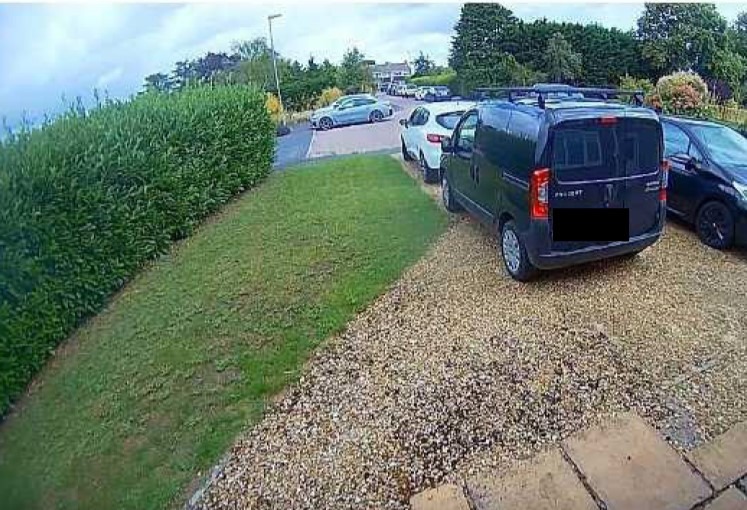Whoever coined the phrase ‘the camera never lies” might well be challenged if he or she were to scrutinise two photos of the ramifications of moving a historic Fenland fountain.
Businessman Gary Richmond has clashed with a district councillor over the use of a photo showing the spot where March Fountain is being moved to as part of a multimillion improvement scheme.
Cllr Steve Count says the photo issued by Fenland Council on behalf of the March Area Transport strategy group, “agreed to mark the proposed location of the fountain on the ground.
“This will help the group and residents visualise and understand the impact of the proposed location more fully.”

But Mr Richmond, who with his partner Linzi Betts own Malletts jewellers in Broad Street, March, has posted a separate picture which he believes offers a more realistic view of the impact the fountain will have on his business.
Of the council issued photo, he says the “road outline gives absolutely no perspective of the size/scale of the structure for us or our neighbours!
“A much better place would be next to the river where the shelter currently is, for all to see and a sensible distance from business fronts.”
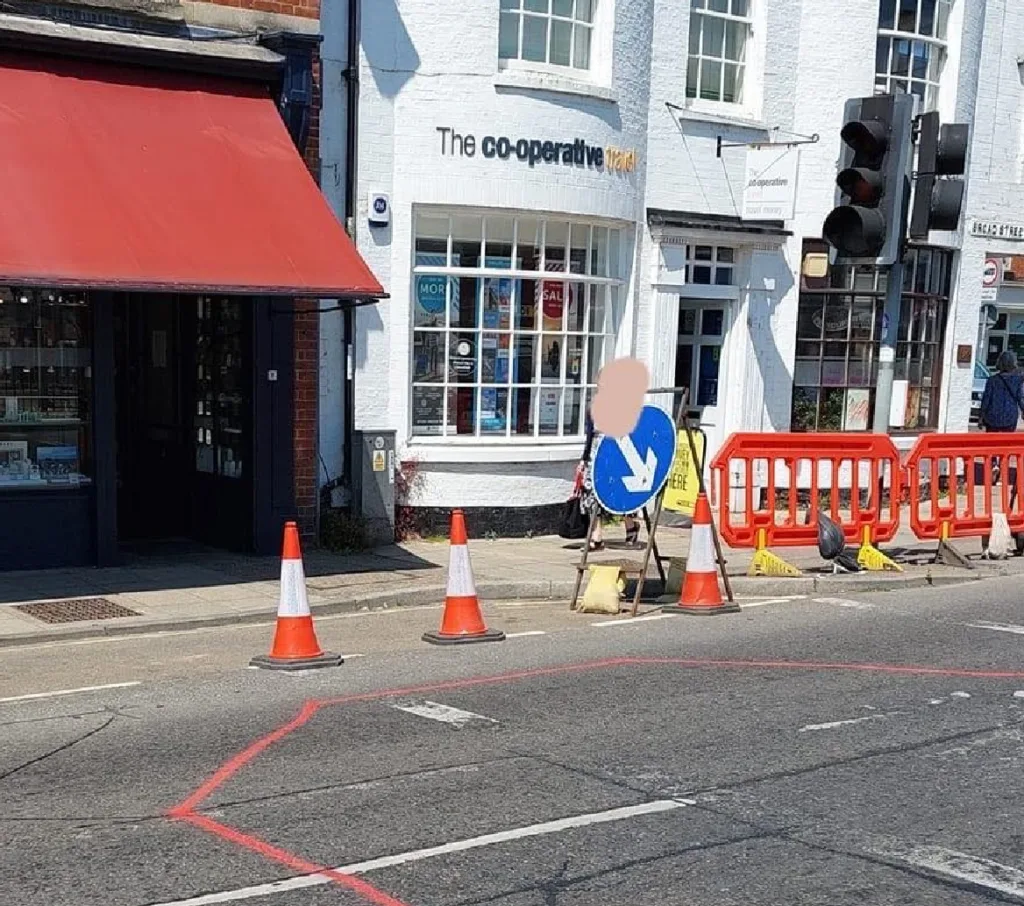
The couple believe Fenland councillors have made a massive mistake in agreeing to move the coronation fountain close to their shop.
Exasperated by the decision to move the fountain so near to their shop, they penned an open letter to councillors earlier in this year.
In the letter they expressed outrage and indignation at the decision – and queried why no councillor came to speak with them prior to the decision being taken.
But Fenland District Council has rejected opposition to the move and says work to dismantle it will begin on June 26.
And the council says Octavius, the company given the regeneration project, will appoint a “specialist heritage contractor to carefully dismantle, wrap and store the Grade II listed fountain”.
A council spokesperson said the relocation of the fountain was approved by its planning committee in February.

“The fountain will be moved a few metres from its current position, at the top of the central reservation in Broad Street, to what will become a new pedestrianised, public realm area,” said the spokesperson.
“It’s relocation will enable the new Broad Street road layout to be created, with a new roundabout replacing the existing traffic lights to reduce congestion and improve the flow of traffic, whilst also improving air quality in Broad Street.
“Its new public realm location, no longer surrounded by traffic, will also allow greater appreciation and enjoyment of the historic structure, which was built to celebrate the Coronation of King George V in 1911.”
The council says once the fountain is dismantled, it will put in storage until being re-instated at the end of next year.
Cllr Count said marking out the positioning of the fountain at its new location “will help residents to better visualise the location and gauge any concerns”.

Cllr Jan French said: “We fully appreciate these works involve some disruption for our local businesses and residents, but they are essential to ensure the town we love adapts and thrives in future.
“Rather than sitting back and allowing our town centre to fall victim to the continued national decline of high streets, this is our opportunity to create a more purposeful town centre that meets the needs of our community.
“There’ll be less congestion with the removal of traffic lights and a new mini roundabout, a greener pedestrianised area with seating for socialising, a new seating area overlooking the river and many more improvements.
But none of this has pacified the owners of Malletts.

“The decision to move the fountain in front of Malletts, our property, was approved by five non-March resident councillors,” they claim.
“No consideration as to how this could impact our business was discussed.”
They say moving the fountain was not presented properly to the committee.
“It was stated at the meeting the distance from the shop front will be 5.2 metres,” they say.
“Did any councillors do a site visit before the meeting to check on the actual distance for this large imposing structure and try to imagine how it would impact us?
“We and our near neighbours didn’t witness any.
“We have measured it and it will be too close.”
Jennifer Lawler of March Society, now a town councillor, has always objected to the fountain being moved 15‐20 metres south‐west onto the pedestrianised area in front of Malletts.
“The fountain is a prominent historic landmark of March in its present position at the head of Broad Street for the last 110 years,” she said.
“At the moment it is highly visible to everyone travelling along Dartford Road and Station Road, and Broad Street from the south.
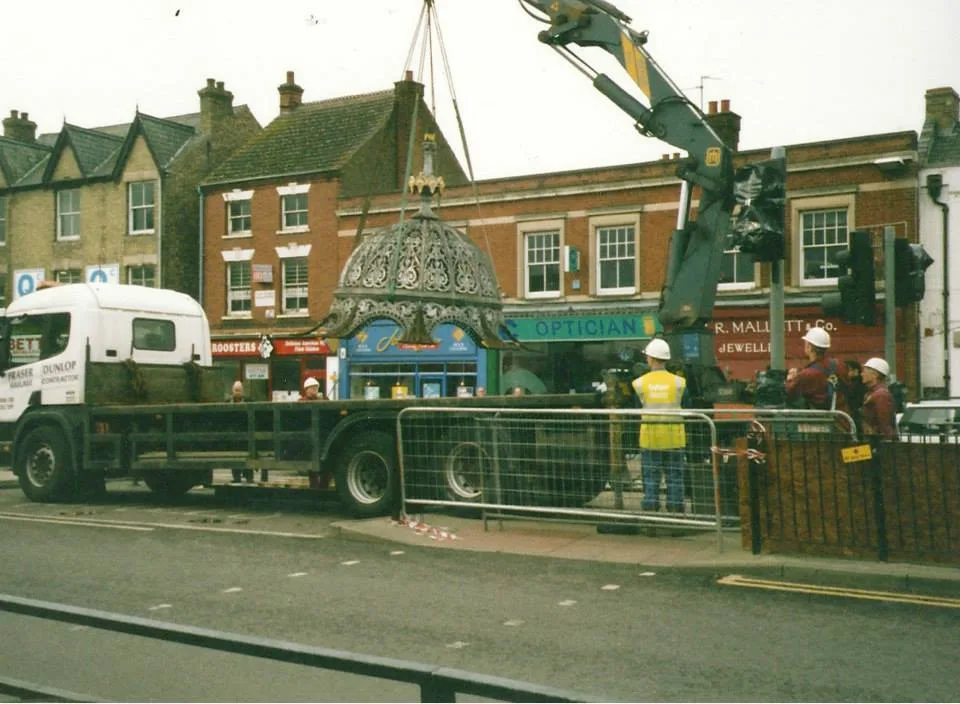
“To maintain its status if it has to be moved, we would like it moved further south, further away from buildings and more centrally placed in the wider pedestrian area.”
Morton Partnership is the structural engineer brought in by Fenland Council to advice on moving the fountain. Here are some of their observations about the challenge ahead.
They say March fountain canopy is a fine cast iron canopy constructed of numerous individual iron castings which are bolted together.
The canopy and drinking fountain were erected in 1912, assisted by the inhabitants of March, to provide drinking water and commemorate the coronation of his Majesty King George V.
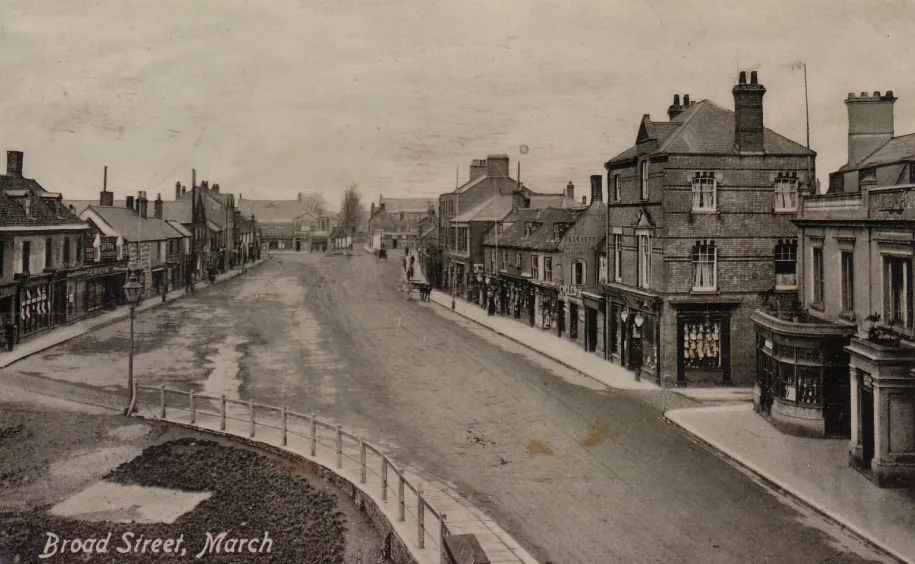
It is understood that the drinking font, horse, and dog troughs were removed in the early 1970’s as they were deemed a traffic hazard. The canopy was listed a grade II English Heritage building on 22nd February 1985 – the canopy was restored in 2002.
The canopy and columns sit on a three-tier stone octagonal plinth; the lower tier is largely obscured by surrounding concrete. An, assumed later, electrical lighting scheme has been installed to the canopy.
“The installation and fixing system are somewhat dated and could be improved / updated,” says Morton.
“Suitable scaffold or other access equipment should be designed and approved to allow appropriate access to all parts of the structure.
“Many of the components weigh more than 100kg so appropriate lifting and moving equipment will be required.
“A spider mini crane of appropriate size may be suitable, but the contractor shall provide proposals for approval.
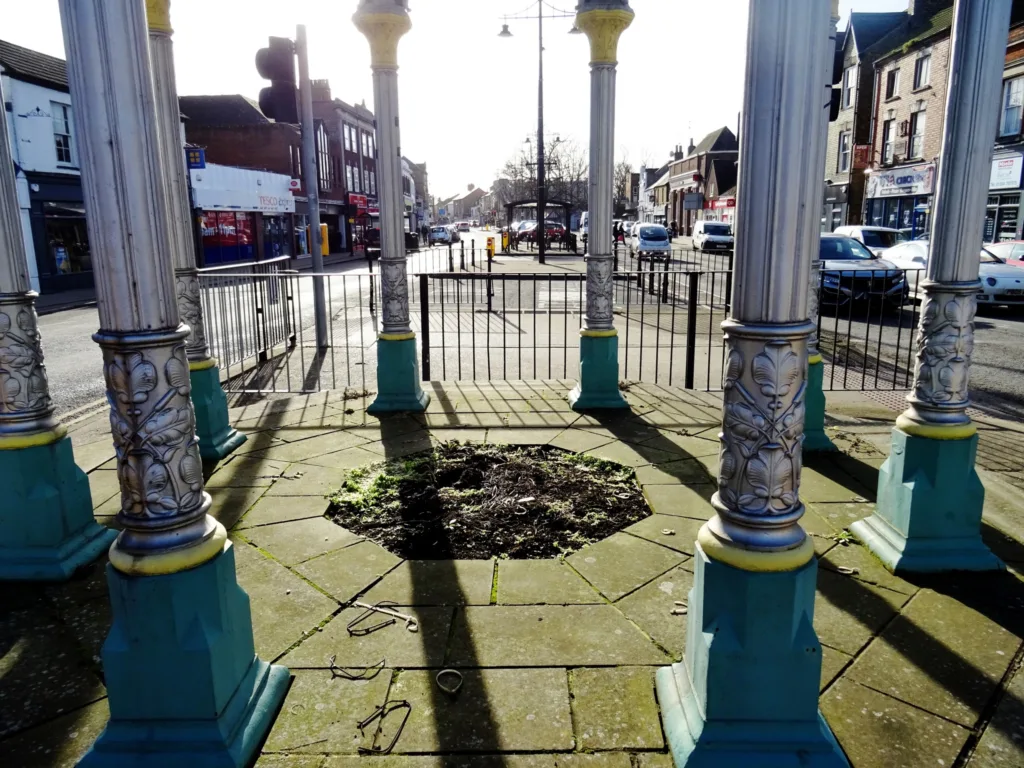
“The canopy shall be dismantled broadly speaking from the top down.
“Each component should be individually removed where possible to avoid the risk of fracturing fixing lugs etc.
“Each component should be individually tagged with 2 metal tags using a unique identifier. This should be recorded and cross referenced with digital images of the component, showing their location on the structure and a separate image of the removed item.
“A record of location, orientation, including details of any defects found and other salient information shall be compiled and updated as the structure is dismantled.
“Components shall be packed into appropriately purpose made plywood packing cases using appropriate softening and bracing to ensure that one component is not in contact with other component to avoid damage to the surface finish of the item
“The components are to be stored in an approved dry and secured unit.
“The location of the storage facility is not known at this time The contractor shall have appropriate insurances to cover the dismantling and transport to store in place to cover accidental loss or damage.
“The contractor may assume that insurance liability will pass to the local authority once the items are placed in store.”

Morton says each packing case shall be clearly marked up detailing the contents within each packing case.
“Dismantled components must be stored in a locked and secure facility prior to transport to the storage facility.
“It may be possible to transport components at the end of each working day, the location of the storage facility is not known at this time but, in any event, components cannot be left in an unsecure location.
“The stone steps and flagstones shall also be documented and packed into suitable packing cases as above. Each packing case should not weigh in excess of 1000kg.
“The electrical and assumed water services shall be isolated during the dismantling and left safe and secure at the end of dismantling works.”
Morton says there may be a significant period of time between dismantling and re-erection.
A prestart photographic survey will be undertaken to record damage, defects, and other salient features of both the canopy and surrounding areas.






